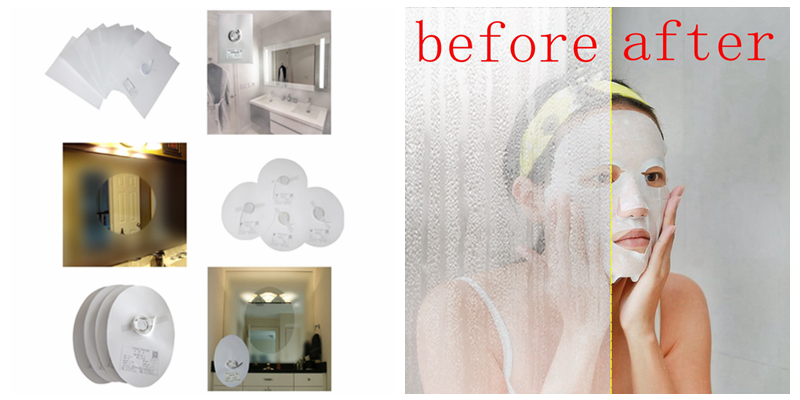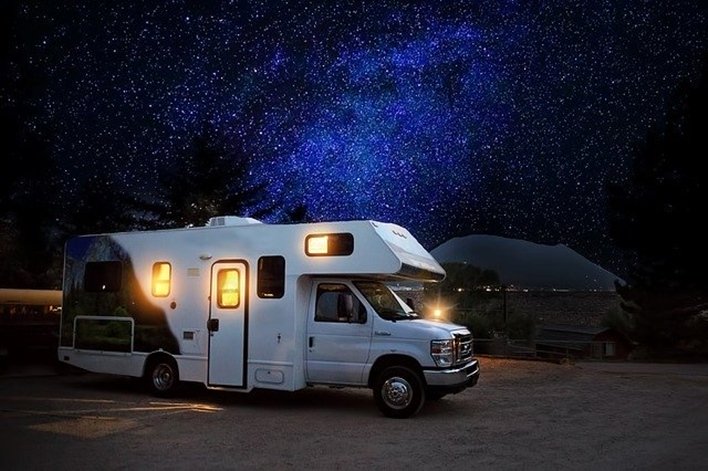Under cabinet lighting is a very convenient and useful lighting application. Unlike a standard screw-in light bulb, however, installation and setup is a bit more involved. We've put together this guide to help you through choosing and installing an under cabinet lighting solution.
Advantages of Under Cabinet Lighting
As its name suggests, under cabinet lighting refers to lights that are installed under a cabinet, resulting in illumination of the area immediately below a row or section of cabinets. It is most commonly used in kitchen areas, where additional lighting is useful for food preparation.
Under cabinet lighting has several distinct advantages. First, under cabinet lighting is resourceful - rather than needing to install an entire lamp fixture or ceiling fixture, under cabinet lights can be installed directly into a cabinet that is already fixed into place. As a result, under cabinet lighting can be very cost effective, especially when considering the total cost of materials.
Second, under cabinet lighting can be a very efficient use of light. What we mean by efficiency here does not necessarily refer to electrical efficiency (e.g. LED vs halogen), but the fact that under cabinet lighting directs light to where it is needed (i.e. kitchen counter) without much "wasted" light that spills over across the room. When compared to ceiling or table lamps, which disperse light everywhere, under cabinet lighting is a very efficient alternative.
Third, under cabinet lighting is aesthetically pleasing. Not only will it improve the brightness and overall ambiance of your kitchen, it can increase the resale value of your home. One significant advantage here is that under cabinet lighting is almost always completely hidden due to the fact that it is mounted on the underside of cabinets. Additionally, since it is typically installed below head level, most occupants will not "look up" into the light and see wires or fixtures. All they see is a nice, bright light being cast downwards towards the kitchen counter.
Types of Under Cabinet Lighting - Puck Lights
Puck lights have traditionally been popular options for under cabinet lighting. They are short, cylindrical lights (shaped like a hockey puck) with a diameter of 2-3 inches. The puck light fixtures will typically mount onto the underside of cabinets using small screws that are included with the product.

Today, LED puck lights dominate the market, and offer comparable performance at a fraction of the energy consumption. LEDs do not operate on AC line voltage, but rather low voltage DC, so they will require a power supply to convert the line voltage. Keep in mind that these transformer devices can be a bit bulky and will require a bit of creativity to place in a hidden location under a cabinet., or deal with a "wall-wart" that plugs directly into the electrical outlet.
But because LED puck lights are so efficient, some can actually be battery operated. This can eliminate the need to run electrical wires, making installation a breeze, and eliminating the sloppy look of loose electrical wires.
In terms of lighting effect, puck lights create a more dramatic look similar to spotlights, with a directed beam that casts a roughly triangular beam shape immediately under each puck light. Depending on your tastes and preferences, this may or may not be a desired look.
Also keep in mind that you will want the appropriate quantity of puck lights with appropriate spacing, since areas below the puck lights will be light "hotspots" while the areas in between will have less illumination. In general, you will likely want approximately 1-2 feet between puck lights, but if there is a shorter distance between the cabinets and kitchen counter, you may want to place them closer together, as the light will have less distance to "spread out."
Types of Under Cabinet Lighting - Bar and Strip Lights
Integrated LED light bars are typically rigid "bars" that are 1, 2 or 3 foot in length, and have LEDs mounted inside of it. Oftentimes, they are marketed as "direct wire" - meaning that no additional electronics or transformers are necessary. Simply plug the fixture's wires into an electrical outlet and you're good to go.

Some LED light bars also allow for daisy chaining, meaning multiple light bars can be linked together consecutive. This also makes installation easy, since you don't have to run separate wires for each fixture.
What about LED strip reels? Typically, these products are more suited for those comfortable with low voltage electronics, but nowadays a complete line of accessories and solutions has made them much easier to work with.
They come in 16 foot reels, and are flexible, which means they can be installed on non-flat surfaces and make turns around corners. They can be cut to length and, and simply mounted onto the underside of virtually any surface.

Especially when lighting a large area, LED strip lights can be a much more cost effective solution. Even if you're not comfortable with electronics, it may be worth having a contractor come in and give you an estimate, as the final cost may not be so different from LED light bars, and the final lighting effect is very pleasing!
Why We Recommend LEDs for Under Cabinet Lighting
LED is the future of lighting, and under cabinet applications are no exception. Regardless of whether you choose to purchase an LED puck light kit or LED light bar or LED strip, the advantages of LED are numerous.
Longer lifetimes - under cabinet lights are not impossible to access, but changing out old light bulbs is never a fun chore. With LEDs, light output does not diminish singificantly until after 25k - 50k hours - that is 10 to 20 years depending on your usage.
Higher efficiency - LED under cabinet lights provide more light per unit of electricity. Why spend more on your electric bill when you can start saving money immediately?
More color options - want something really warm and cozy? Choose a 2700K LED strip. Want something with more energy? Choose 4000K. Or want the ability to achieve any color, including punchy greens and cool, dark blues? Try an RGB LED strip.
Non-toxic - LED lights are durable and do not contain mercury or other toxic chemicals. If you're installing under cabinet lighting for a kitchen application, this is an additional consideration since the last thing you want is accidental contamination of food and food prep areas.
Best Color for Under Cabinet Lighting
Alright, so we've convinced you that LED is the way to go. But one of the advantages of LEDs - having more color options - might cause some confusion with all of the choices available. Below we break down your options.
Color Temperature
Color temperature is a number that describes how "yellow" or "blue" a light's color is. Below we provide some guidelines, but keep in mind that there is no absolutely correct choice, and much of it can be based on your personal preference.
- 2700K is considered the same color as the classic incandescent light bulb
- 3000K is slightly bluer and is similar to halogen bulb light color, but still has a warm, inviting yellow color to it.
- 4000K is often called "neutral white" because it is neither blue nor yellow - and is the middle of the color temperature scale.
- 5000K is commonly used for determining color, such as for prints and textiles
- 6500K is considered natural daylight, and is a good way to approximate appearance in outdoor lighting conditions

For kitchen applications, we strongly recommend a color temperature between 3000K and 4000K.
Why? Well, lights below 3000K will cast a very yellowish-orange hue, which can make color perception a bit difficult if you are using the area for food prep, so we don't recommend any lighting below 3000K.
Higher color temperatures allow for better color acuity. 4000K provides a nice, balanced white that no longer has much of a yellow/orange bias, making it more easier to "see" colors properly.
Unless you're lighting an industrial area where "daylight" color is necessary, we strongly recommend staying below 4000K, especially for residential under cabinet lighting applications. This is simply because the rest of the kitchen and home likely has 2700K or 3000K lighting - if you suddenly install something too "cool" for the kitchen, you may end up with an unsightly color mismatch.
Below is an example of a kitchen whose under cabinet lighting color temperature is too high - it simply appears too blue and does not mesh well with the rest of the interior lighting.

CRI: pick 90 or above
CRI is a bit tricky to understand because it is not immediately visible from just simply looking at the emitted light from an under cabinet light.
CRI is score ranging from 0 to 100 which measures how accurate objects appear under a light. The higher the score, the more accurate.
What does accurate really mean, anyway?
Let's say you are trying to judge the ripeness of a tomato you're about to cut. A perfectly accurate LED under cabinet light would make the tomato's color look exactly the same as it does under natural daylight.
An inaccurate (low CRI) LED under cabinet light, however, would make the tomato's color look different. Despite your best efforts, you may be unable to determine accurately whether a tomato is ripe or not.
Well, what is a sufficient CRI number?
- For non-color critical tasks, we recommend purchasing LED under cabinet lights with a minimum of 90 CRI.
- For enhanced appearance and color accuracy, we recommend 95 CRI or above, including R9 values over 80.
How do you know what an LED under cabinet light's CCT or CRI is? Virtually all manufacturers will be able to provide this to you on the product specification sheet or packaging.


















